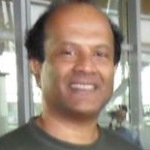Sri Lanka, The Resplendent Isle, The Real Of Indian Ocean Then & Now
 How times have changed! When DS Senanayake, SWRD Bandaranaike, Dudley Senanayake, Sirimavo Bandaranaike ruled Sri Lanka, did the people go around glorifying them as larger-than-life superhuman entities? Did anyone try to deify them as worthy of obeisance and reverence? Did we see articles in newspapers specifically devoted to the worship of such personalities as some kind of weird idols that were somehow better than ordinary human beings? Did the ministers who worked under these leaders praise to high heaven, with empty and obviously insincere adjectives, the virtues of these men and women? However, Sri Lanka’s recent rulers rode high on these ego trips.
How times have changed! When DS Senanayake, SWRD Bandaranaike, Dudley Senanayake, Sirimavo Bandaranaike ruled Sri Lanka, did the people go around glorifying them as larger-than-life superhuman entities? Did anyone try to deify them as worthy of obeisance and reverence? Did we see articles in newspapers specifically devoted to the worship of such personalities as some kind of weird idols that were somehow better than ordinary human beings? Did the ministers who worked under these leaders praise to high heaven, with empty and obviously insincere adjectives, the virtues of these men and women? However, Sri Lanka’s recent rulers rode high on these ego trips.
DS Senanayake’s son Dudley did not have children, so that dynasty ended. SWRD Bandaranaike’s place passed to his wife and then later on to his daughter. That dynasty seems over as well. JR Jayewardene did not cultivate a dynastic culture. DB Wijetunge was by far the most honourable human being to hold the post of “Executive” president. He had no ambition to pass on his genes for the spawn to rule the land. Dynasties have ruled in neighbouring countries in contemporary times. However, this is not a characteristic of representative democracy; nor the parliamentary system as practiced in progressive and politically mature countries.
When the Senanayakes ruled, say the population in Sri Lanka was 12 million. How many ministers were employed? How many “portfolios” were there? Granted, that times were less complicated, with no special emphasis on national security or women’s affairs. If the population has doubled since then, how many times more, is the number of ministers, their minions, carers, secretaries, “official” residences, “official” vehicles for entourages and “security” battalions? There were nine provinces in Sri Lanka. I believe there are still about the same number. Yet, how many more snouts splurge at the trough of public wealth?
How have rich people become rich? They either inherit wealth from their parents, marry other rich people, or make lots of profit from a lucrative business, where sales incomes are consistently high and expenses are correspondingly low, which result in much more cash inflow than outflow. The profits are largely kept by the owners to make their lives better (ie rich people) Who are the consumers? Do ordinary consumers also become rich? No.
As we see around us, prices of commodities invariably go up, although prices of some items like vegetables and fruits (killer commodities that I will deal with later) do fluctuate, maintaining the illusion of fairness. Are there many more people who are very rich than when the Senanayakes and Bandaranaikes ruled in the 60’s and 70’s? Yes. Exponentially so. In fact, the super- rich in Sri Lanka are many, many times richer than the richest back then ever were, allowing for inflation and depreciation in the value of the currency etc. Has economic development (per capita Gross Domestic Product) improved as much as the rich had become richer? No way! In fact it has largely stagnated and has been marginal.
What does the above say about the poor? With almost the same amount of wealth in the country (not accounting for the massive, record foreign debt) the poor have far less than they ever had several generations ago. In the ruthless capitalist system that dominates poor third world Sri Lanka, are the poor being taken care of? Is there a welfare system (Samurdhi?) that keeps the poor above poverty levels, with at least two meals a day, a suitable roof above, protection from common diseases which can kill, or a proper education? I would suggest a loud NO. The rich component of society is a dismal 0.003%, whereas the poor (including the so-called “middle class”) make up 99.997%. So, who has the system benefitted? Most Sri Lankans? NO.
Compared to three or four decades ago, in the last few years many more local residents tune into “Buddhist” channels on TV and radio more often, and also “listen” to bana (sermons) being preached by all sorts of monks with various bents, some often flouting basic concepts of the Buddha’s teachings while talking of their own unsubstantiated theories. Hordes of “pilgrims” flock to the more fashionable places of worship, dressed in white to symbolise purity, on full moon days, presumably to observe “uposatha ashtanga seela” as never before in the contemporary history of Sri Lanka. Yet these same people very clearly seem to be as far from the dhamma as ever, in their daily countenance, behaviour and attitudes, easily established by simple observation.
Now, people lie as a habit, not as a hasty escape route from difficult situations. Dishonesty has become a norm rather than the embarrassing exception. In fact, if one could successfully deceive people consistently and achieve financial objectives and prosperity, others look up to them with pride. The fact that such vermin are beneath contempt, by traditional standards of ethics and morality is ignored or overlooked. The Buddhist concepts of the noble eight-fold path “samma kammantha, samma waayaama” in practice by their kith and kin are looked down upon as stupidity and naivety, or a simple lack of opportunistic wisdom, not worthy of credit.

